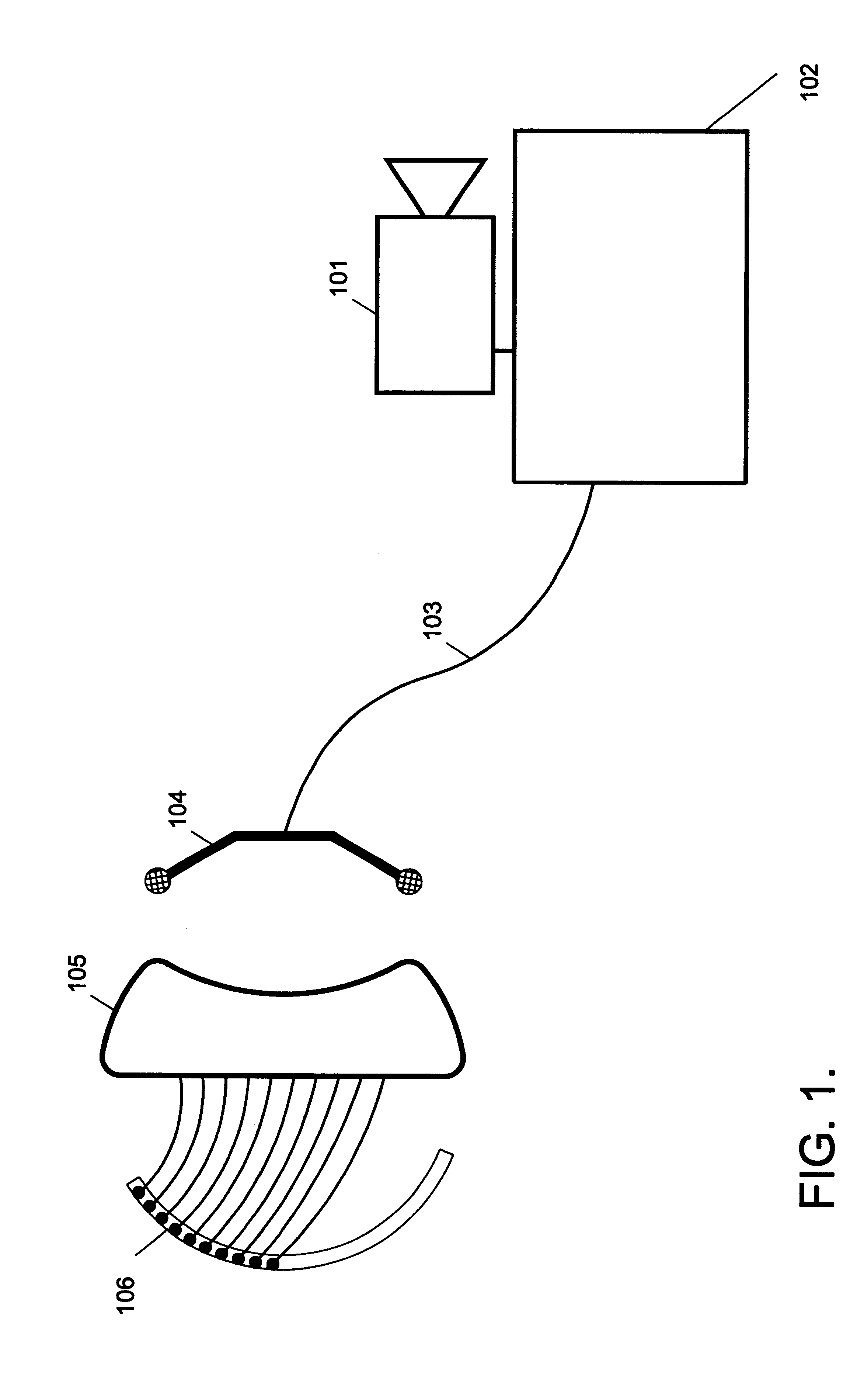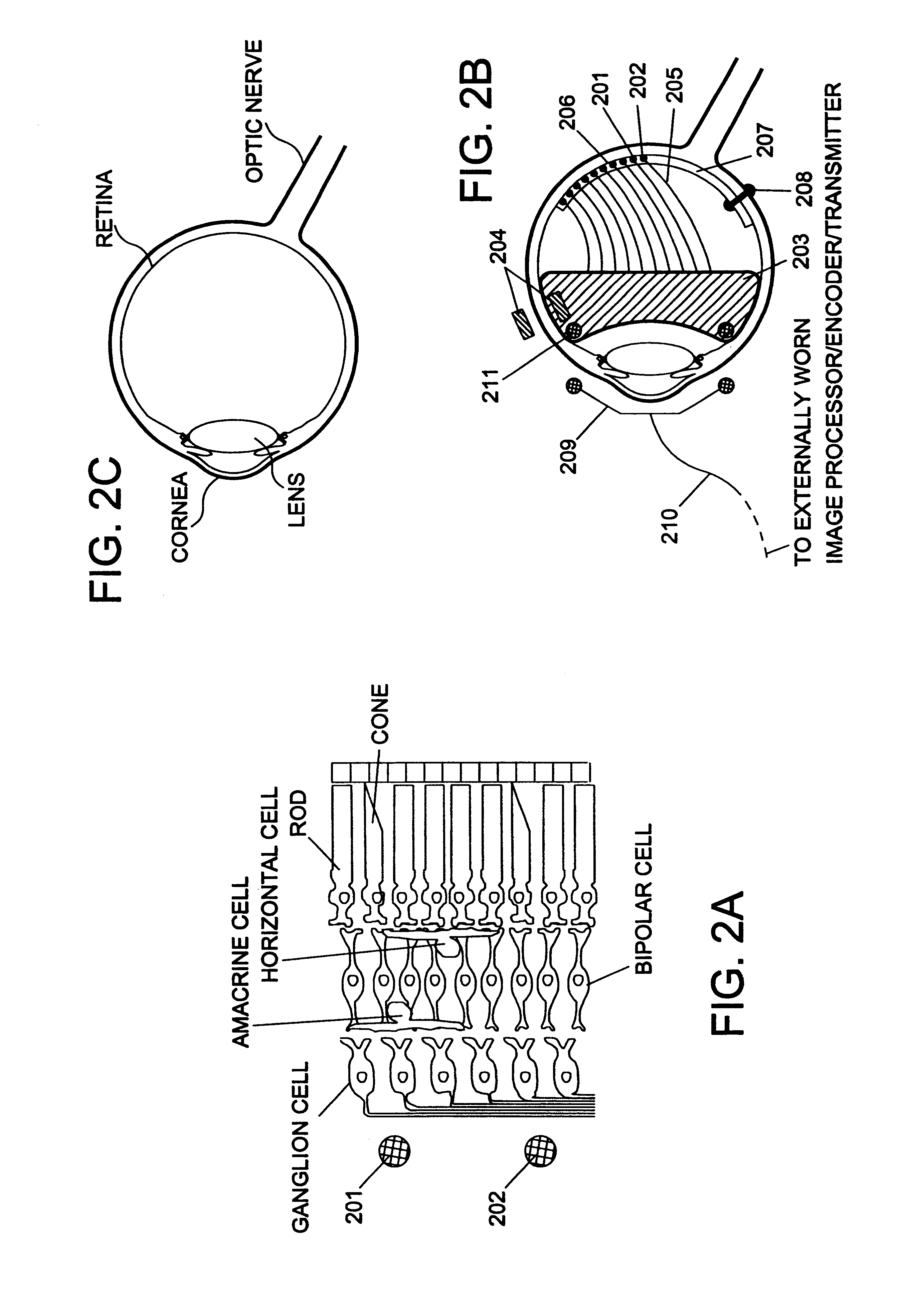Retinal stimulator
- Summary
- Abstract
- Description
- Claims
- Application Information
AI Technical Summary
Benefits of technology
Problems solved by technology
Method used
Image
Examples
Embodiment Construction
The method of the present invention, a retinal stimulator, is illustrated in FIGS. 1 through 11.
A retinal stimulator (FIG. 1) comprises an external image detector / processor 101 that supplies encoder / transmitter 102 with image data, said image data is translated into a series of encoded, radiofrequency bursts according to a pre-determined protocol and sent to tuned transmitting antenna 104 via cable 103; transmitted radiofrequency waves (not shown) are broadcast from antenna 104, through tissue (not shown), and received and decoded in receiver / decoder / stimulator 105 to extract stimulation parameter data and rectified to power said receiver / decoder / stimulator; in accordance with the decoded data, a controlled, diphasic, charge balanced, constant current stimulus wave is delivered to a single active stimulating electrode on electrode array 106, enters retinal tissue (not shown) and returns through one or more indifferent electrode(s) on 106 and to receiver / decoder / stimulator 105. If sp...
PUM
 Login to View More
Login to View More Abstract
Description
Claims
Application Information
 Login to View More
Login to View More - R&D
- Intellectual Property
- Life Sciences
- Materials
- Tech Scout
- Unparalleled Data Quality
- Higher Quality Content
- 60% Fewer Hallucinations
Browse by: Latest US Patents, China's latest patents, Technical Efficacy Thesaurus, Application Domain, Technology Topic, Popular Technical Reports.
© 2025 PatSnap. All rights reserved.Legal|Privacy policy|Modern Slavery Act Transparency Statement|Sitemap|About US| Contact US: help@patsnap.com



